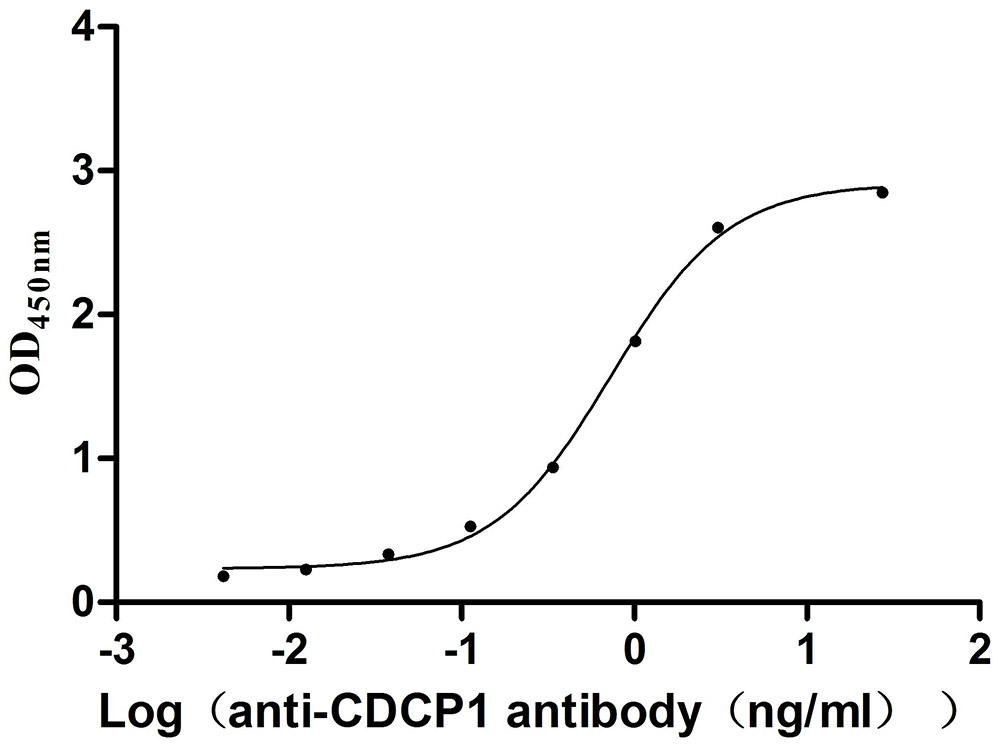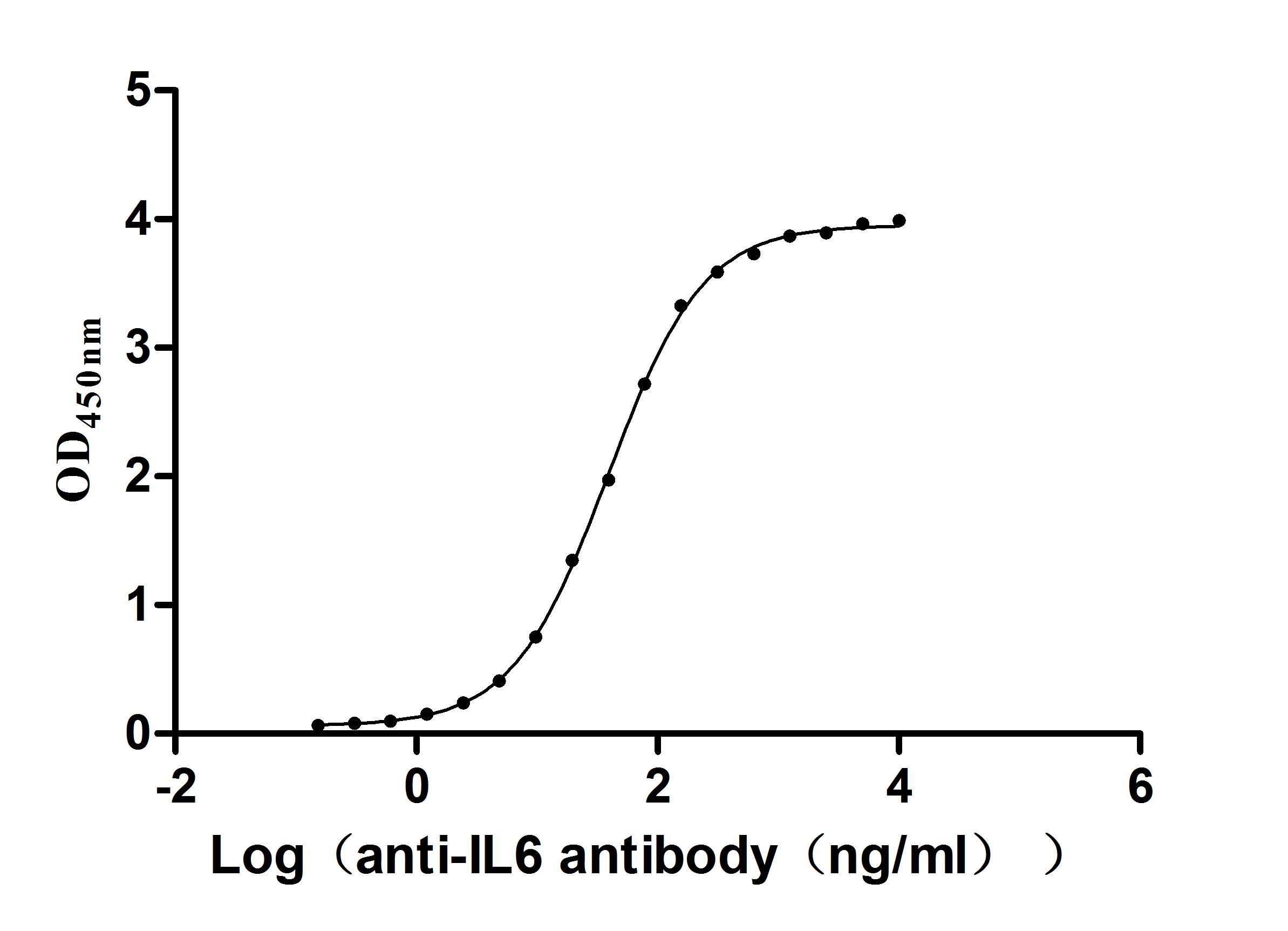Recombinant Mouse Serine/threonine-protein kinase MARK2 (Mark2)
-
中文名称:小鼠Mark2重组蛋白
-
货号:CSB-YP013497MO
-
规格:
-
来源:Yeast
-
其他:
-
中文名称:小鼠Mark2重组蛋白
-
货号:CSB-EP013497MO
-
规格:
-
来源:E.coli
-
其他:
-
中文名称:小鼠Mark2重组蛋白
-
货号:CSB-EP013497MO-B
-
规格:
-
来源:E.coli
-
共轭:Avi-tag Biotinylated
E. coli biotin ligase (BirA) is highly specific in covalently attaching biotin to the 15 amino acid AviTag peptide. This recombinant protein was biotinylated in vivo by AviTag-BirA technology, which method is BriA catalyzes amide linkage between the biotin and the specific lysine of the AviTag.
-
其他:
-
中文名称:小鼠Mark2重组蛋白
-
货号:CSB-BP013497MO
-
规格:
-
来源:Baculovirus
-
其他:
-
中文名称:小鼠Mark2重组蛋白
-
货号:CSB-MP013497MO
-
规格:
-
来源:Mammalian cell
-
其他:
产品详情
-
纯度:>85% (SDS-PAGE)
-
基因名:
-
Uniprot No.:
-
别名:Mark2; EmkSerine/threonine-protein kinase MARK2; EC 2.7.11.1; EC 2.7.11.26; ELKL motif kinase 1; EMK-1; MAP/microtubule affinity-regulating kinase 2; PAR1 homolog; PAR1 homolog b; Par-1b; mPar-1b
-
种属:Mus musculus (Mouse)
-
蛋白长度:Full length protein
-
表达区域:1-776
-
氨基酸序列MSSARTPLPT LNERDTEQPT LGHLDSKPSS KSNMLRGRNS ATSADEQPHI GNYRLLKTIG KGNFAKVKLA RHILTGKEVA VKIIDKTQLN SSSLQKLFRE VRIMKVLNHP NIVKLFEVIE TEKTLYLVME YASGGEVFDY LVAHGRMKEK EARAKFRQIV SAVQYCHQKF IVHRDLKAEN LLLDADMNIK IADFGFSNEF TFGNKLDTFC GSPPYAAPEL FQGKKIDGPE VDVWSLGVIL YTLVSGSLPF DGQNLKELRE RVLRGKYRIP FYMSTDCENL LKKFLILNPS KRGTLEQIMK DRWMNVGHED DELKPYVEPL PDYKDPRRTE LMVSMGYTRE EIQDSLVGQR YNEVMATYLL LGYKSSELEG DTITLKPRPS ADLTNSSAPS PSHKVQRSVS ANPKQRRSSD QAVPAIPTSN SYSKKTQSNN AENKRPEEET GRKASSTAKV PASPLPGLDR KKTTPAPSTN SVLSTSTNRS RNSPLLDRAS LGQASIQNGK DSLTMPGSRA STASASAAVS AARPRQHQKS MSASVHPNKA SGLPPTESNC EVPRPSTAPQ RVPVASPSAH NISSSSGAPD RTNFPRGVSS RSTFHAGQLR QVRDQQNLPY GVTPASPSGH SQGRRGASGS IFSKFTSKFV RRNLNEPESK DRVETLRPHV VGSGGTDKDK EEFREAKPRS LRFTWSMKTT SSMEPNEMMR EIRKVLDANS CQSELHERYM LLCVHGTPGH ENFVQWEMEV CKLPRLSLNG VRFKRISGTS MAFKNIASKI ANELKL
-
蛋白标签:Tag type will be determined during the manufacturing process.
The tag type will be determined during production process. If you have specified tag type, please tell us and we will develop the specified tag preferentially. -
产品提供形式:Lyophilized powder
Note: We will preferentially ship the format that we have in stock, however, if you have any special requirement for the format, please remark your requirement when placing the order, we will prepare according to your demand. -
复溶:We recommend that this vial be briefly centrifuged prior to opening to bring the contents to the bottom. Please reconstitute protein in deionized sterile water to a concentration of 0.1-1.0 mg/mL.We recommend to add 5-50% of glycerol (final concentration) and aliquot for long-term storage at -20℃/-80℃. Our default final concentration of glycerol is 50%. Customers could use it as reference.
-
储存条件:Store at -20°C/-80°C upon receipt, aliquoting is necessary for mutiple use. Avoid repeated freeze-thaw cycles.
-
保质期:The shelf life is related to many factors, storage state, buffer ingredients, storage temperature and the stability of the protein itself.
Generally, the shelf life of liquid form is 6 months at -20°C/-80°C. The shelf life of lyophilized form is 12 months at -20°C/-80°C. -
货期:Delivery time may differ from different purchasing way or location, please kindly consult your local distributors for specific delivery time.Note: All of our proteins are default shipped with normal blue ice packs, if you request to ship with dry ice, please communicate with us in advance and extra fees will be charged.
-
注意事项:Repeated freezing and thawing is not recommended. Store working aliquots at 4°C for up to one week.
-
Datasheet :Please contact us to get it.
靶点详情
-
功能:Serine/threonine-protein kinase. Involved in cell polarity and microtubule dynamics regulation. Phosphorylates CRTC2/TORC2, DCX, HDAC7, KIF13B, MAP2, MAP4 and RAB11FIP2. Phosphorylates the microtubule-associated protein MAPT/TAU. Plays a key role in cell polarity by phosphorylating the microtubule-associated proteins MAP2, MAP4 and MAPT/TAU at KXGS motifs, causing detachment from microtubules, and their disassembly. Regulates epithelial cell polarity by phosphorylating RAB11FIP2. Involved in the regulation of neuronal migration through its dual activities in regulating cellular polarity and microtubule dynamics, possibly by phosphorylating and regulating DCX. Regulates axogenesis by phosphorylating KIF13B, promoting interaction between KIF13B and 14-3-3 and inhibiting microtubule-dependent accumulation of KIF13B. Also required for neurite outgrowth and establishment of neuronal polarity. Regulates localization and activity of some histone deacetylases by mediating phosphorylation of HDAC7, promoting subsequent interaction between HDAC7 and 14-3-3 and export from the nucleus. Also acts as a positive regulator of the Wnt signaling pathway, probably by mediating phosphorylation of dishevelled proteins (DVL1, DVL2 and/or DVL3). Modulates the developmental decision to build a columnar versus a hepatic epithelial cell apparently by promoting a switch from a direct to a transcytotic mode of apical protein delivery. Essential for the asymmetric development of membrane domains of polarized epithelial cells.
-
基因功能参考文献:
- These results indicate that the basal localization of Par-1b in the outer epithelial cells is required for myoepithelial cell compression, and Par-1b is required for myoepithelial differentiation, regardless of its localization. PMID: 27841695
- data suggest ectopic PAR1 expression is not tolerated in mouse platelets and indicate a different approach is required to develop a small animal model for the purpose of any future preclinical testing of PAR antagonists as anti-platelet drugs PMID: 27788223
- a model whereby MARK2 negatively regulates insulin sensitivity in peripheral tissue through inhibition of KSR1 PMID: 22206009
- ROCK1/PAR-1b-dependent regulation of basement membrane placement is required for the coordination of tissue polarity and the elaboration of tissue structure in the developing submandibular salivary gland. PMID: 22186730
- PAR1b plays a novel role in the maintenance of mature dendritic spine morphology by regulating microtubule growth and the accumulation of p140Cap in dendritic spines. PMID: 21865452
- Par-1b is a regulator of glucose metabolism and adiposity in the whole animal PMID: 17372192
- Interaction of MARK2 with CaMKI results in a novel, calcium-dependent pathway that plays an important role in neuronal differentiation. PMID: 17442826
- Akt enhances the activity of PAR1 to promote tau hyperphosphorylation at S262/S356, a tau species that is not recognized by the CHIP/Hsp90 complex PMID: 18292230
显示更多
收起更多
-
亚细胞定位:Cell membrane; Peripheral membrane protein. Lateral cell membrane. Cytoplasm, cytoskeleton. Cell projection, dendrite. Cytoplasm.
-
蛋白家族:Protein kinase superfamily, CAMK Ser/Thr protein kinase family, SNF1 subfamily
-
组织特异性:Highly expressed in adult kidney and testis, lower levels in heart, brain, spleen, lung and liver. Expressed in the head and neural fold in 8 dpc embryos, the limb buds, telencephalic vesicles, eyes, branchial archs and heart at 11.5 dpc, the ectoderm at
-
数据库链接:
KEGG: mmu:13728
STRING: 10090.ENSMUSP00000108969
UniGene: Mm.258986
Most popular with customers
-
Recombinant Human Tumor necrosis factor ligand superfamily member 8 (TNFSF8), partial (Active)
Express system: Mammalian cell
Species: Homo sapiens (Human)
-
Recombinant Human C5a anaphylatoxin chemotactic receptor 1 (C5AR1)-VLPs (Active)
Express system: Mammalian cell
Species: Homo sapiens (Human)
-
Recombinant Human C-type lectin domain family 4 member C (CLEC4C), partial (Active)
Express system: Mammalian cell
Species: Homo sapiens (Human)
-
Recombinant Human Interleukin-2 receptor subunit alpha (IL2RA), partial (Active)
Express system: Mammalian cell
Species: Homo sapiens (Human)
-
Recombinant Mouse CUB domain-containing protein 1 (Cdcp1), partial (Active)
Express system: Mammalian cell
Species: Mus musculus (Mouse)
-
Recombinant Human C-C chemokine receptor type 6(CCR6)-VLPs (Active)
Express system: Mammalian cell
Species: Homo sapiens (Human)
-
-
Recombinant Human Cadherin-1(CDH1),partial (Active)
Express system: Mammalian cell
Species: Homo sapiens (Human)




















